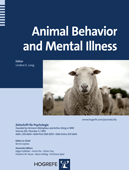“Neuroscience and Education: Added Value of Combining Brain Imaging and Behavioral Research”
A Topical Issue of the Zeitschrift für Psychologie
Educational Neuroscience has emerged as an interdisciplinary field, mainly stimulated by the improvement of brain imaging techniques and a growing interest in human learning inside and outside of schools. Getting information about human learning and cognition beyond behavioral observation by recording brain characteristics was highly appreciated by many learning researchers. At the same time, however, they were concerned about the uncritical enthusiasm and unrealistic expectations among many parents, teachers, and policy makers. In many countries, this was spurred by some representatives from neuroscience who attempted to use insights from basic brain research for school reforms and improving classroom practice. Meaningless slogans like “brain-based learning” got attention while at the same time sound scientific insights about school-related learning from behavioral research were ignored. This said, however, does not mean to underestimate the added value of including insights from neuroscience in research on learning and instruction.
A decade ago, the guest editors of this topical issue were invited by the German Federal Ministry of Education and Research to write an expert report on “Educational Research and the Neurosciences: Expectations, Evidence, and Research prospects.” The German version appeared in 2005, and the English translation was published 1 year later (http://www.ifvll.ethz.ch/research/bildungsreform_band13_en.pdf).
The report was based on contributions and discussions of an interdisciplinary workshop with psychologists, educational researchers, and neuroscientists. The focus was on the bidirectional relationship between neuroscience and behavioral research: On the one hand, research questions on school-related learning were discussed which can be informed by neuroscience. On the other hand, it was realized that the best way to learn more about what makes the human brain unique is observing it during educational activities.
Following the expert report, the German Ministry launched the research initiative NIL (Neuroscience, Instruction, Learning), and similar initiatives have been emerging in many other countries. Therefore, time has come for looking back to the scientific progress made in the past decade. In the final chapter of the expert report, the guest editors raised several topics worth being addressed in forthcoming research. In the present topical issue we would like to document the progress that has been made in the past decade. Therefore articles dealing with the following topics are welcome:
- 1)Deviant brain functions in children who suffer from dyslexia or dyscalculia: To what extent have insights from neuroscience informed the development of therapeutic treatments?
- 2)Effects of training on brain functions: It is heavily debated whether certain kinds of training can improve general brain functioning and thereby foster remote transfer. Training studies which considered brain imaging data are therefore welcome.
- 3)Individual differences in brain functioning: Neural efficiency has been identified as a brain correlate of intelligence. Studies on the interaction of intelligence and prior knowledge in information processing and learning are appreciated.
- 4)Neural underpinnings of error processing: As learning almost inevitably goes with making errors, new insights into feedback and error correction mechanisms can be presented.
- 5)The emergence of insights: The acquisition of complex and meaningful content knowledge is an arduous and time-consuming process. Insights often appear all of a sudden, although severe changes on the knowledge base must have taken place before. Finding neural indicators of successful learning trajectories before behavior/achievement is visible is a particularly worthwhile question.
- 6)Cognitive load: Successful problem solving depends on an efficient use of working memory capacity. Research on how the reduction of extraneous load in presenting learning material affects brain functioning is appreciated.
- 7)Effects of modalities: In formal domains like science and mathematics, many problems can be presented and processed in spatial or in symbolic modalities. Progress made in identifying neural correlates of these representations and their relationship to achievement fit the topical issue.
How to submit: Interested authors should submit a letter of intent including: (1) a working title for the manuscript, (2) names, affiliations, and contact information for all authors, and (3) an abstract of no more than 500 words detailing the content of the proposed manuscript to Elsbeth Stern (stern@ifv.
There is a two-stage submissions process. Initially, interested authors are requested to submit only abstracts of their proposed papers. Authors of the selected abstracts will then be invited to submit full papers. All papers will undergo blind peer review.
- Deadline for submission of abstracts is October 31, 2015.
- Deadline for submission of full papers is February 29, 2016.
The journal seeks to maintain a short turnaround time, with the final version of the accepted papers being due by May 15, 2016. The topical issue will be published as issue 4 (2016).
For additional information, please contact any of the guest editors.
About the Journal
The Zeitschrift für Psychologie, founded in 1890, is the oldest psychology journal in Europe and the second oldest in the world. One of the founding editors was Hermann Ebbinghaus. Since 2007 it is published in English and devoted to publishing topical issues that provide state-of-the-art reviews of current research in psychology.
Guidelines for Article Preparation
- –Only English-language submissions can be considered.
- –Contributions must be original (not published previously or currently under review for publication elsewhere).
- –Review and original articles should not exceed 45,000 characters and spaces in length, including references, figures, and tables (allowances for figures and tables should be deducted on the basis of size – approximately 1,250 characters for a quarter-page figure/table).
- –Other submission formats (research summaries, opinion pieces, etc.) may be considered, please contact the editors for details.
- –Reference citations in the text and in the reference list should be in accordance with the principles set out in the Publication Manual of the American Psychological Association (6th ed.) – see also any recent issue of the journal.
For detailed author guidelines, please see the journal’s website at www.hogrefe.com/journals/zfp/



